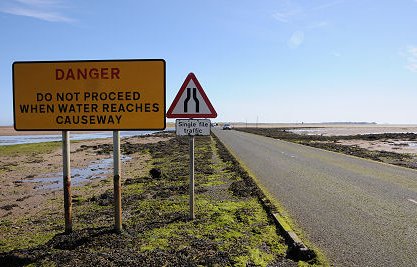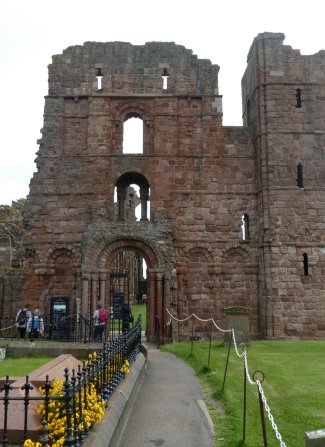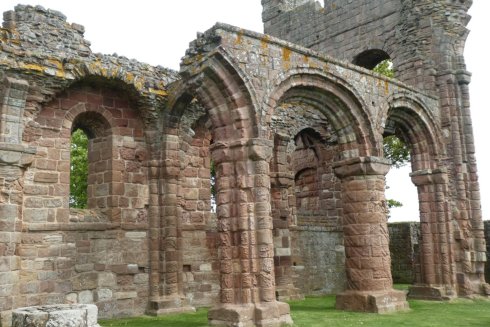The priory at Lindisfarne, also known as Holy Island, was founded around
634; around the same time as Wilfrid was born. Irish monks from the
Abbey at Iona had established it at the request of King Oswald of
Northumbria. In its early years, it was entirely Celtic in tradition,
and headed by Saint Aidan. It became the seat of a bishop
When Wilfrid arrived in 648 as a teenager it did not look grand;
it would have been a small group of wooden building thatched with reeds.
An
important place, nevertheless: for a while it became the seat of a
bishop. Just after the time of Wilfrid, c 715-720, the Lindisfarne
Gospels were produced here, one of the greatest illuminated manuscripts.
Later history was not kind to Lindisfarne. In 793 there came the
first Viking raid here, followed by Danish settlements, resulting in the
abandonment of the site. In 1093 the monastery was re-established here:
many of the ruins here today date from this time. The church, on the
site of the original priory, was built c 1150.
Travel to the island still requires care: the causeway is
flooded at high tide. Pilgrims still follow the route that Wilfrid would
have taken, across the sands at low tide.









Pages from the Lindisfarne Gospels